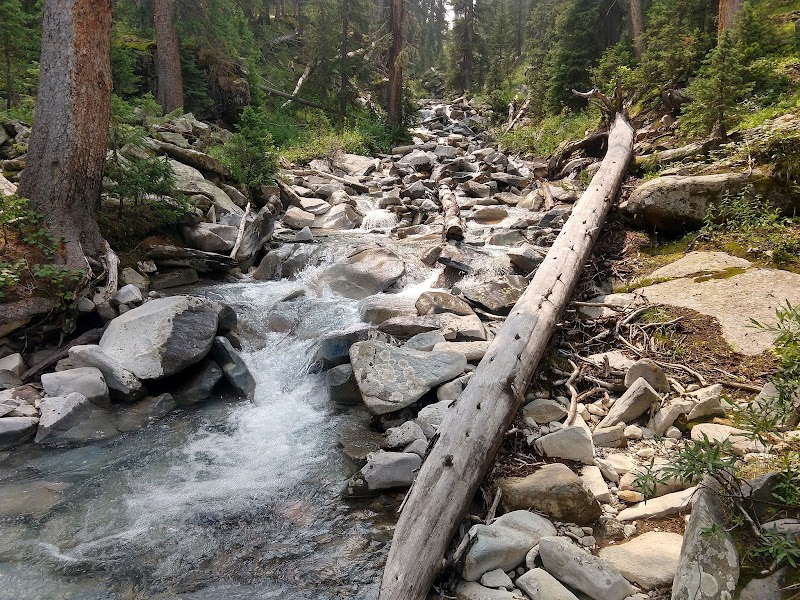
Rocky Mountains Adventures
The Rocky Mountains stretch over 3,000 miles from New Mexico to British Columbia and are a haven for outdoor enthusiasts. They offer a stunning array of activities, from hiking and skiing to wildlife viewing.
Popular Activities
Conquering the Rocky Mountains: A Climber's Odyssey Through the Majestic Heights of MT, WY, CO, NM, ID, and UT
The Rocky Mountains stretch like a spine across the western United States, a thrilling challenge for climbers drawn to their rugged beauty and formidable terrain. Each state offers a unique flavor of adventure, from the towering granite peaks of Colorado to the stunning sandstone spires in Utah. For those who yearn for both the thrill of ascent and the serenity of nature, the Rockies are more than just a destination; they are a call to the wild.
Setting out on your climbing expedition, consider starting in Montana, where the vast landscapes of Glacier National Park beckon. Here, rocky outcrops loom overhead, daring climbers with their steep walls and breathtaking views. The park features a variety of routes suitable for all levels. Be prepared for significant elevation changes and always check the weather forecast; conditions can shift quickly in the mountains. An early start is essential—not only to avoid crowds but also to capitalize on cooler temperatures and clearer skies.
Turning south towards Wyoming, the majestic Tetons rise sharply from the valley floor, their jagged silhouettes cutting through the bright blue sky. The granite here presents a different challenge, with routes that require both technical skill and a careful eye for safety. As you embark on your ascent, the echo of your footsteps will mingle with the sounds of wildlife; the rustling of leaves and distant calls of birds create a soundtrack that enhances the climbing experience. Remember to pack enough hydration and snacks to keep your energy levels high. The altitude can be deceptive, and acclimatization is key.
In Colorado, the Rockies reach their zenith, with peaks that draw climbers from all around the globe. The air is crisp and filled with the scent of pine as you make your way to the foot of your chosen mountain. Iconic climbing areas abound, featuring everything from challenging boulders to multi-pitch routes. While the scenery is undeniably stunning, it’s essential to focus on the climb. The granite here can be unforgiving—prioritize safety with proper gear and ensure your knots are secure. As you conquer each route, pause to absorb the panoramic views; the valleys below stretch endlessly, a reminder of the adventure that lies ahead.
Venturing further south to New Mexico, a different kind of climb awaits. The Sandia Mountains offer unique sandstone formations where the golden light of dusk enhances the rock's warm hues. The terrain is varied, with a mix of crack climbing and sport routes. Embrace the unexpected and remain flexible; climbing here can surprise even the most seasoned adventurers. Night ascents can offer a mesmerizing experience under a blanket of stars, transforming the landscape into a realm of adventure where every shadow tells a story.
Idaho and Utah round out your journey, with each state providing its own distinctive allure. Idaho's Sawtooth Wilderness is less frequented, giving climbers the sense of exploring a hidden treasure where a salt-and-pepper sky meets rugged peaks. The opportunities for exploration are vast—make sure to bring a reliable guidebook and a sense of curiosity as you navigate through less traveled paths.
Utah's red rock landscapes provide a striking contrast to the soaring heights of the Rockies, with fun climbing routes along its famous cliffs. The desert waxes and wanes in temperature; hikes can start chilly in the morning and turn scorching by noon, so layering is your best friend to handle these shifts. Listen carefully for the wind, which whispers tales of the ancient earth as it sweeps through the canyons, reminding you of the timeless nature of your surroundings.
As you pack your gear and set off on your climbing adventure in the Rocky Mountains, immerse yourself fully in the experience. Engage with fellow climbers, respect the environment, and leave no trace. Each summit offers a reward—a breathtaking view and an unparalleled sense of accomplishment. No matter where your path leads, remember that the essence of climbing in the Rockies is not merely in the heights you conquer, but in the heart of the journey itself.
Plan Your Visit
Everything you need to know to prepare for an unforgettable trip to Rocky Mountains.
Entrance Requirements
Some areas require permits or entrance fees; check individual locations.
Best Time to Visit
Late spring to early fall for hiking; winter for skiing and snow sports.
Visitor Information
Rocky Mountain National Park Visitor Center, Yellowstone Visitor Center.
Getting There
Major highways connect parts of the Rockies; some roads are seasonal.
Weather & Climate
Summer temperatures range from 70-80°F during the day but drop at night. Winters are cold with heavy snow, making spring and fall ideal for cooler weather hikes.
Conservation Efforts
Threats include climate change impacting snowpack and glaciers, as well as potential wildfires. Efforts are underway to protect habitats and species like the Canada lynx.
Camping in Rocky Mountains
Find the perfect spot to stay overnight and immerse yourself in the details.
Moraine Park Campground
Located in Rocky Mountain National Park; famous for scenic views and wildlife.
Jenny Lake Campground
Offers stunning views of the Teton Range in Grand Teton National Park.
Top Trails
Continental Divide Trail
The trail spans from Mexico to Canada, offering varied terrains and ecosystems.
Sky Pond via Glacier Gorge Trail
Ends at an alpine lake, featuring waterfalls and stunning views.
Bear Lake Trail
A short, accessible loop with beautiful lake and mountain views.
Twin Sisters Trail
Offers panoramic views from the summit and challenges with elevation gain.
Trailblazer Tips
Altitude sickness can affect anyone, stay hydrated and acclimate.
Summer storms can appear suddenly; pack rain gear and check forecasts.
Book campsites well in advance, especially during peak season.
Sunrise hikes offer stunning views and fewer crowds.
